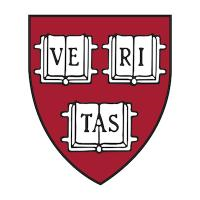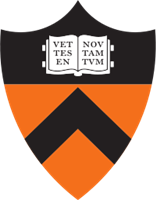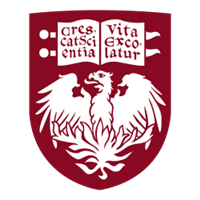What do they do?
Develop and apply biostatistical theory and methods to the study of life sciences.
Also known as:
Biometrician, Biostatistical Consultant, Biostatistician, Research Scientist, Statistical Scientist
-
34.7%
Change
Ranks #27 in job growth rate120Job Openings
Ranks #19 in net job growth
-
Harvard University
Cambridge, MA
-
Princeton University
Princeton, NJ
-
University of Chicago
Chicago, IL
-
Yale University
New Haven, CT
-
University of Pennsylvania
Philadelphia, PA
Looking for colleges that offer a specific major? Use the College Match Tool to find your best-matched schools and discover your estimated Net Price!
- Doctorate or Professional Degree (12%)
- Master's degree (36%)
- Bachelor's degree (39%)
- Associate's degree (3%)
- Some college, no degree (6%)
- High school diploma equivalent (3%)
- Less than high school diploma (<1%)
Most Popular Majors that prepare Biostatisticians
-
#1
-
Degrees Granted
17,028
-
Female Students
7,052
-
Male Students
9,976
-
Median Starting Salary
$54,000
-
-
#2
-
Degrees Granted
14,079
-
Female Students
5,374
-
Male Students
8,705
-
Median Starting Salary
$53,900
-
-
#3
-
Degrees Granted
3,366
-
Female Students
1,419
-
Male Students
1,947
-
Median Starting Salary
$57,400
-
-
#4
-
Degrees Granted
2,828
-
Female Students
1,100
-
Male Students
1,728
-
Median Starting Salary
$56,100
-
-
#5
-
Degrees Granted
626
-
Female Students
210
-
Male Students
416
-
Median Starting Salary
$57,200
-
People in this career often have these skills:
- Mathematics - Using mathematics to solve problems.
- Reading Comprehension - Understanding written sentences and paragraphs in work-related documents.
- Speaking - Talking to others to convey information effectively.
- Science - Using scientific rules and methods to solve problems.
- Critical Thinking - Using logic and reasoning to identify the strengths and weaknesses of alternative solutions, conclusions, or approaches to problems.
- Active Learning - Understanding the implications of new information for both current and future problem-solving and decision-making.
- Complex Problem Solving - Identifying complex problems and reviewing related information to develop and evaluate options and implement solutions.
- Judgment and Decision Making - Considering the relative costs and benefits of potential actions to choose the most appropriate one.
- Active Listening - Giving full attention to what other people are saying, taking time to understand the points being made, asking questions as appropriate, and not interrupting at inappropriate times.
- Writing - Communicating effectively in writing as appropriate for the needs of the audience.
- Learning Strategies - Selecting and using training/instructional methods and procedures appropriate for the situation when learning or teaching new things.
- Programming - Writing computer programs for various purposes.
People in this career often know a lot about:
- Mathematics - Knowledge of arithmetic, algebra, geometry, calculus, statistics, and their applications.
- English Language - Knowledge of the structure and content of the English language including the meaning and spelling of words, rules of composition, and grammar.
- Computers and Electronics - Knowledge of circuit boards, processors, chips, electronic equipment, and computer hardware and software, including applications and programming.
People in this career often have talent in:
- Inductive Reasoning - The ability to combine pieces of information to form general rules or conclusions (includes finding a relationship among seemingly unrelated events).
- Mathematical Reasoning - The ability to choose the right mathematical methods or formulas to solve a problem.
- Written Comprehension - The ability to read and understand information and ideas presented in writing.
- Oral Expression - The ability to communicate information and ideas in speaking so others will understand.
- Deductive Reasoning - The ability to apply general rules to specific problems to produce answers that make sense.
- Oral Comprehension - The ability to listen to and understand information and ideas presented through spoken words and sentences.
- Written Expression - The ability to communicate information and ideas in writing so others will understand.
- Problem Sensitivity - The ability to tell when something is wrong or is likely to go wrong. It does not involve solving the problem, only recognizing that there is a problem.
- Information Ordering - The ability to arrange things or actions in a certain order or pattern according to a specific rule or set of rules (e.g., patterns of numbers, letters, words, pictures, mathematical operations).
- Speech Clarity - The ability to speak clearly so others can understand you.
- Number Facility - The ability to add, subtract, multiply, or divide quickly and correctly.
- Speech Recognition - The ability to identify and understand the speech of another person.
- Fluency of Ideas - The ability to come up with a number of ideas about a topic (the number of ideas is important, not their quality, correctness, or creativity).
- Category Flexibility - The ability to generate or use different sets of rules for combining or grouping things in different ways.
- Near Vision - The ability to see details at close range (within a few feet of the observer).
People in this career often do these activities:
- Analyze data to identify trends or relationships among variables.
- Analyze health-related data.
- Present research results to others.
- Prepare analytical reports.
- Determine appropriate methods for data analysis.
- Update knowledge about emerging industry or technology trends.
- Design research studies to obtain scientific information.
- Prepare graphics or other visual representations of information.
- Write computer programming code.
- Develop scientific or mathematical models.
- Develop detailed project plans.
- Monitor operational activities to ensure compliance with regulations or standard operating procedures.
- Create databases to store electronic data.
- Apply mathematical principles or statistical approaches to solve problems in scientific or applied fields.
- Design computer modeling or simulation programs.
- Assign duties or work schedules to employees.
- Train others in computer interface or software use.
This page includes data from:

 Occupation statistics: USDOL U.S. Bureau of Labor Statistics Occupational Employment Statistics
Occupation statistics: USDOL U.S. Bureau of Labor Statistics Occupational Employment Statistics
 Videos: CareerOneStop, USDOL/ETA and the Minnesota Department of Employment & Economic Development
Videos: CareerOneStop, USDOL/ETA and the Minnesota Department of Employment & Economic Development









